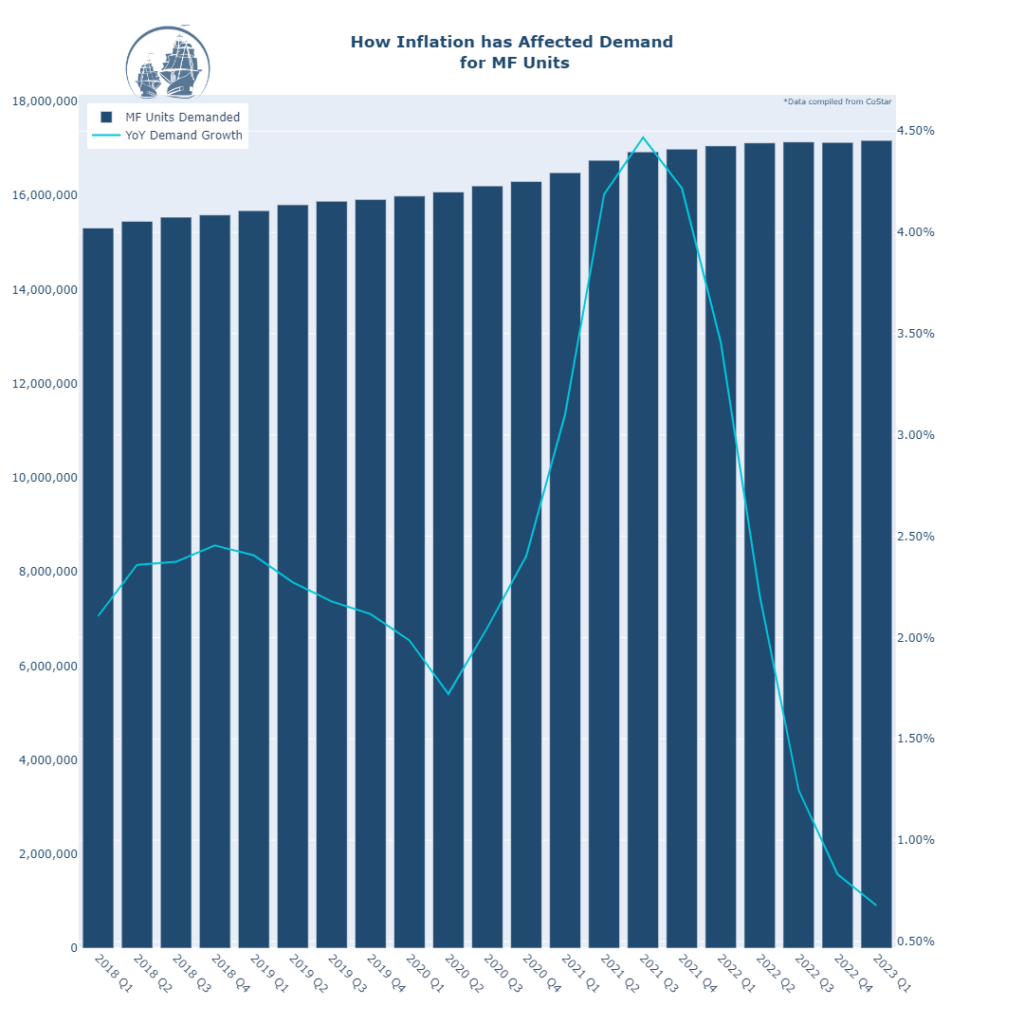Inflation has directly and indirectly impacted the multifamily market.
Directly, the cost of materials, labor, insurance, and utilities have all increased at the property/operator level. Due to these increases, properties across the country have seen contractions in net operating income (NOI) or reduced gains that would have been realized from rent growth. This change in NOI reduces the capacity for the property to pay debt service, make repairs or renovate, and in turn, lowers the attractiveness or marketability of a sale or refinance of a property. The lower NOIs restrict the amount of loan dollars that can be supported and/or add increased pressure on the capitalization rate utilized to support the value of a transaction.
Jay Parsons, Head of Economics and Industry Principals for RealPage, observes that “property insurance premiums are soaring across the country — and especially in coastal states — due to a ‘perfect storm’ […] of factors: natural disasters, energy grid problems, a drop in the number of insurance providers in select markets, plus of course soaring replacement costs and property values”.

Additionally, current and potential tenants across the country are seeing the percentage of their income attributed to paying utilities, rent, and other living expenses continue to rise and consequently, shrink their disposable income or buying power. As a result, more people are unable or unwilling to dedicate a higher portion of their income towards rent and opt to have a roommate or move in with family to save money. This shift results in lowered demand for units or, in some cases, inability to pay rent on time or at all (delinquency/bad debt).
For demand, CoStar data supports that the demand for MF units increased, with large YoY Demand growth, from 2020 Q2 to 2021 Q3 (the periods increasing inflation) but began to decelerate in YoY increases beginning in 2021 Q4. YoY Demand, largely due to huge increases in 2021 and 2022, finished 2022 below 1.00% and Q1 2023 at 0.68%.
Inflation has affected the economy and interest rates, which have had an indirect impact on the multifamily sector. Inflation has been elevated above the United States Federal Reserve’s (“the Fed”) target of 2% since March 2021. As a result of increased inflation, the Fed has utilized its tools to reduce inflation, one of which is raising its target range for the federal funds rate. The federal funds rate has an indirect impact on interest rates as it is used as a reference when banks are setting interest rates to charge each other as well as consumers borrowing.
To reduce inflation, the Fed has systematically raised its rate from near 0% in Q1 2022 to a range of 5.00% to 5.25% in May 2023. With each rate hike came uncertainty in the market of where interest rates would settle, which slowed the pace of transactions and led many borrowers to sit on the sidelines and/or put off listing or refinancing their properties. This reduction has led to lower production volume and decreased number of deals seeking financing across the industry. Many anticipate volume to increase over the next 12 months, but it is a matter of specifically when that will occur, which will be helped by lower inflation and stable interest rates.







